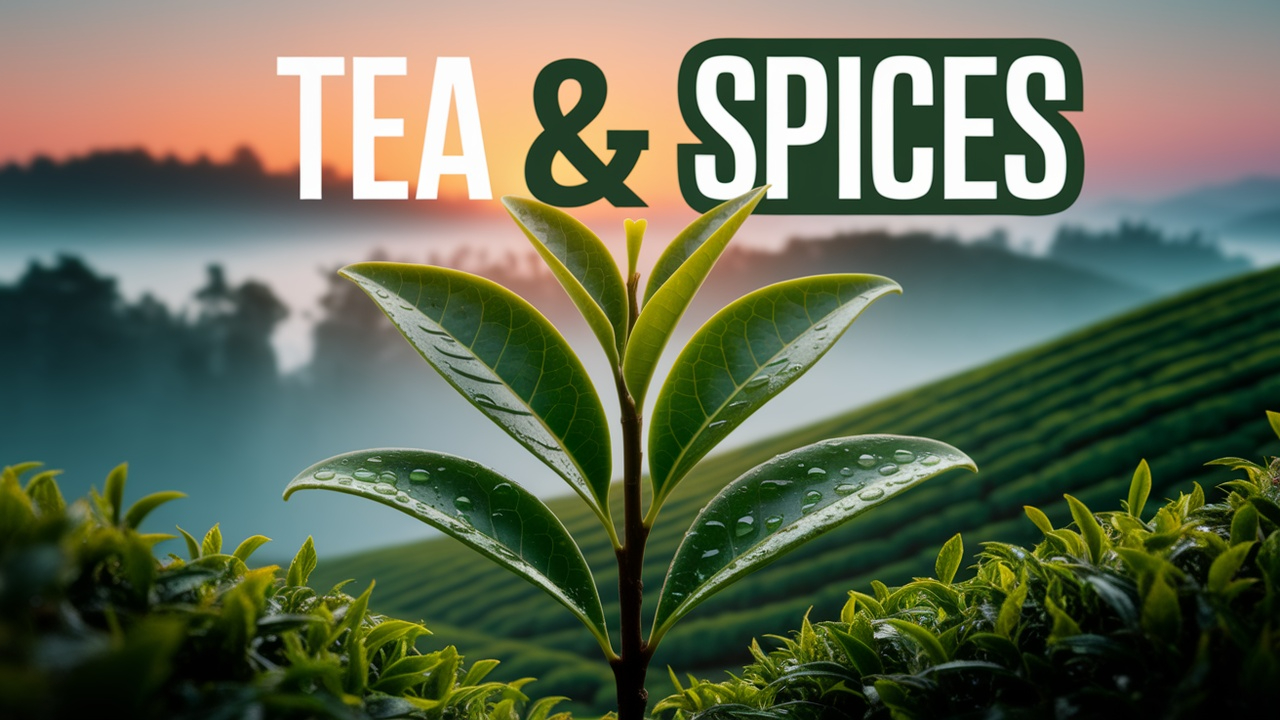
This comprehensive course provides an in-depth understanding of tea and spice cultivation, covering essential practices, soil management, pest control, and the economics of cultivation. Participants will explore the historical significance, cultivation techniques, and harvesting processes of various tea and spice plants, equipping them with the knowledge to successfully grow and market these valuable crops.
Course Levels
-
Level 1: Introduction to Tea and Spices
An introductory level that covers the basics of tea and spice cultivation, including history, significance, and an overview of different varieties.
-
Level 2: Basic Cultivation Techniques
This level focuses on fundamental cultivation practices including soil preparation, planting methods, and basic maintenance.
-
Level 3: Advanced Cultivation Practices
Building on basic techniques, this level delves into advanced practices such as pest management, disease control, and sustainable farming methods.
-
Level 4: Harvesting and Processing
This level addresses the harvesting techniques and post-harvest processing essential for maintaining quality and marketability.
-
Level 5: Marketing and Economics of Tea and Spices
Explore the economic aspects of tea and spice cultivation including market trends, pricing, and marketing strategies.
-
Level 6: Global Trends and Future of Tea and Spices
This advanced level examines global trends in tea and spice cultivation and discusses future opportunities and challenges.
Course Topics
-
Consumer Preferences and Trends
# Consumer Preferences and Trends in Tea and Spices ## Introduction Consumer preferences and trends play a crucial role in shaping the global market for tea and spices. Understanding these trends not...
-
Types of Tea Plants
# Types of Tea Plants Tea is derived from the leaves of the *Camellia sinensis* plant, and understanding the different types of tea plants is crucial for anyone interested in tea cultivation. This to...
-
Understanding Plant Growth Stages
# Understanding Plant Growth Stages Plant growth is a dynamic process governed by various physiological and environmental factors. In the context of tea and spices cultivation, understanding the diff...
-
Climate Change and Its Impact on Cultivation
# Climate Change and Its Impact on Cultivation Climate change refers to long-term alterations in temperature, precipitation patterns, and other atmospheric conditions. Its implications are profound, ...
-
Fertilization Basics
# Fertilization Basics in Tea and Spices Cultivation Fertilization is a critical aspect of cultivation that helps ensure healthy plant growth and optimal yields. In tea and spices cultivation, unders...
-
Economic Importance of Tea and Spices
# Economic Importance of Tea and Spices ## Introduction Tea and spices have been integral to human culture and economy for centuries. They are not just commodities; they are cultural symbols, culinar...
-
Market Analysis for Tea and Spices
# Market Analysis for Tea and Spices ## Introduction Market analysis is a critical component of the marketing plan for any product, including tea and spices. It involves studying the market dynamics,...
-
Integrated Pest Management (IPM)
# Integrated Pest Management (IPM) Integrated Pest Management (IPM) is a sustainable approach to managing pests that combines various biological, cultural, mechanical, and chemical practices to minim...
-
Organic Farming Practices
# Organic Farming Practices Organic farming is a holistic approach to agriculture that prioritizes sustainability, biodiversity, and environmental health. In the context of tea and spices cultivation...
-
Common Diseases in Tea and Spice Plants
# Common Diseases in Tea and Spice Plants Understanding diseases that affect tea and spice plants is crucial for maintaining healthy crops and ensuring high yields. This topic will cover some of the ...
-
Drying and Processing Spices
# Drying and Processing Spices ## Introduction Drying is a crucial step in the spice production process. It helps in preserving the flavor, aroma, and color of spices, while also extending their shel...
-
Technological Innovations in Cultivation
# Technological Innovations in Cultivation ## Introduction In the rapidly evolving world of agriculture, technological innovations play a crucial role in enhancing the efficiency, sustainability, and...
-
Pricing Strategies for Cultivated Goods
# Pricing Strategies for Cultivated Goods Pricing is a critical component of the marketing mix for cultivated goods such as tea and spices. Understanding how to effectively price these products can s...
-
Quality Control Standards
# Quality Control Standards Quality control (QC) standards are essential in the harvesting and processing of tea and spices to ensure that the final products meet specific safety, quality, and regula...
-
History of Tea and Spices
# History of Tea and Spices ## Introduction Tea and spices have been integral to human culture, economy, and exploration for thousands of years. This topic will cover the origins, historical signific...
-
Processing Tea Leaves: Methods and Techniques
# Processing Tea Leaves: Methods and Techniques Processing tea leaves is a critical stage in tea production that transforms freshly harvested leaves into tea ready for consumption. This process invol...
-
Watering and Irrigation Methods
# Watering and Irrigation Methods in Tea and Spices Cultivation Water is a critical component in the cultivation of tea and spices, affecting plant growth, flavor, and yield. Understanding the variou...
-
Post-Harvest Handling and Storage
# Post-Harvest Handling and Storage Post-harvest handling and storage are vital components in the process of tea and spice cultivation. Proper techniques ensure quality preservation, reduce losses, a...
-
Future Opportunities in Niche Markets
# Future Opportunities in Niche Markets ## Introduction In the global landscape of tea and spices, niche markets offer significant potential for growth and innovation. As consumer preferences shift t...
-
Branding and Packaging for Tea and Spices
# Branding and Packaging for Tea and Spices Branding and packaging are critical components in the marketing of tea and spices. They not only influence consumer perception but also play a significant ...
- And 10 more topics...